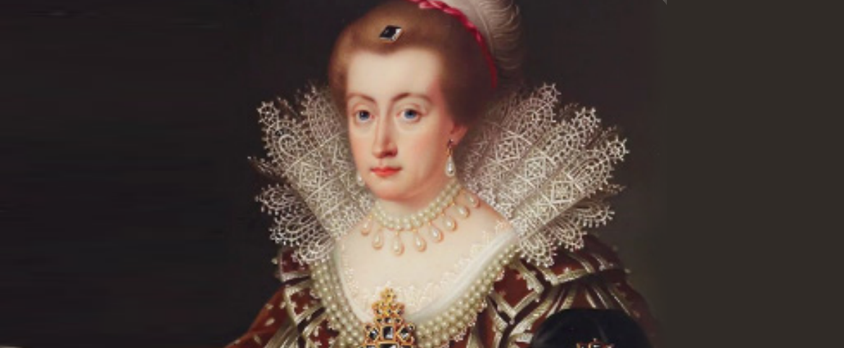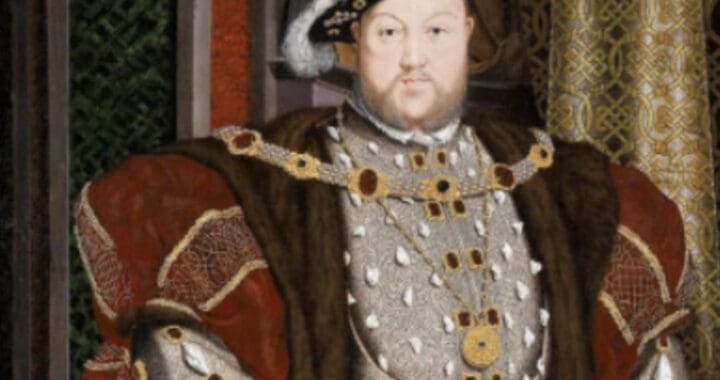
The crown jewels are a collection of jewellery that belong to the Queen in right of the Crown. They are comprised of heirlooms and jewels presented to her during her reign. The Queen regularly wears these pieces in official portraits and formal occasions. The jewels will be passed down to the next Monarch and will be worn to further ceremonies and coronation.
From Henry VIII to Queen Elizabeth II, the monarchs have purchased and been gifted with the most important pieces of the collection.
Jewellery and diamonds in particular have always played a big part in history, being traded, stolen, gifted, looted. Coloured gems have different meanings depending on the country but diamonds is, across the board, the one gem which symbolises power and wealth. Its origin comes from the Greek adamas, which signifies invincible. Every monarch has been depicted in portrait adorned with diamonds.

King Henry VIII is painted wearing black stones in this portrait, but these are in fact diamonds. Diamonds were not depicted in all their glory radiating light and clarity until much later. At this time, the painter’s workshop would complete the painting and did not have access to the gems, therefore altering the diamonds’ colours.
Queen Elizabeth I obtained the Mirror of Portugal from Dom Antonio, fleeing to England after being defeated by the Spanish. He sold the stone, a table-cut diamond weighing 30 carats, to the monarch in an attempt to finance more battles against Spain. Defeated once more, Queen Elizabeth now has hold of the diamond. She has the diamond set in a gold pendant within an enamel surround, suspended from gold chains.
The Queen is shown wearing gold and jewellery in her hair but also on her garment.

The Mirror of Portugal is then bequeathed to James I. It will later be sold to Cardinal Mazarin and recut into the Mazarin III. The Mazarin III was stolen in 1792 during the great heist of the Garde Meuble in Paris and has yet to be recovered.

One of the most famous diamonds to have been part of the Crown jewels is the Sancy. It weighs 55.23 carats, has 51 facets and was considered to be one of the most beautiful diamond for almost two centuries until the Cullinan was found in 1905 in South Africa.
It was purchased by James I for 60,000 French crowns and was set in the Mirror of Great Britain.
The Sancy was described in the Tower of London’s inventory as “…one fayre dyamonde, cut in fawcetts, bought of Sauncy…”
The Sancy was briefly owned by Charles I, King of England and then by his son James II. James had to flee to France under Louis XIV protection and brought with him the Sancy which he agreed to sell to Cardinal Mazarin in 1657 for £25,000. The Sancy is now exhibited in the Louvre.
Anne of Denmark, consort of James I, seen in this portrait wearing large jewels on her corsage, pearl necklace and earrings, diamond in her hair.

After 1725, diamonds were heavily imported from Brazil, as new sources were discovered. Diamonds are then preferred to coloured gems.
Queen Charlotte is painted wearing diamond diadem, girandole earrings, a diamond dog collar and pearls. Girandole earrings were very fashionable in the 18th century and named after a candelabra. They comprise of a central stone suspending three drops.

Aurélia has over twenty years’ experience in the auction industry. She started her career in Business Development and Client Services at Christie’s and Sotheby’s Paris.







